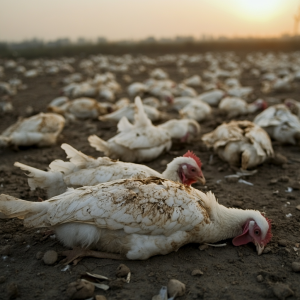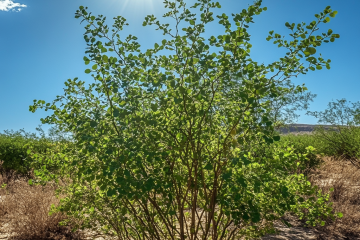
H5N1 Scene of dead chickens
When COVID-19 rocked our world, it made us painfully aware of how fast a virus could spread and upend our lives. But while we were busy stockpiling hand sanitizer and perfecting our sourdough bread, another threat has been quietly looming in the background—H5N1, also known as avian influenza or “bird flu.” And let me tell you, this is not just a chicken coop problem; it’s a global concern that deserves our attention.
H5N1: A Virus on the Move
H5N1 first appeared on the radar in 1997 in Hong Kong, and since then, it’s been playing hopscotch across the globe, infecting birds, mammals, and even humans. The virus is highly contagious among birds, which is a problem because birds don’t exactly follow stay-at-home orders. They migrate, mingle, and spread the virus across borders faster than your favorite travel influencer.
But here’s where it gets alarming: while most human cases have been linked to direct contact with infected birds, the virus has shown a concerning ability to jump species. Recent outbreaks in mammals, including foxes and sea lions, hint at a virus that might be honing its skills for broader transmission. However, it’s important to clarify that H5N1 has not yet been confirmed to transmit from human to human. This isn’t the plot of a bad sci-fi movie; it’s a real, documented risk.
The Deadly Math of H5N1

H5N1 has a 60% mortality rate
Let’s talk numbers because they paint a sobering picture. According to the World Health Organization (WHO), the mortality rate for confirmed human cases of H5N1 is around 60%. Yes, you read that right—60%. For context, the mortality rate of COVID-19 hovered around 1-2% globally. While H5N1 is less efficient at human-to-human transmission (for now), its lethality is a stark reminder that this is not a virus we can afford to ignore.
Globally, H5N1 has caused millions of poultry deaths and culling events, which not only devastate the agricultural sector but also create food security issues. Over 800 human cases have been reported globally, with the majority occurring in countries like Indonesia, Egypt, Vietnam, and China, highlighting its widespread impact. In humans, over 800 cases have been reported since 2003, with more than 450 fatalities. While these numbers may seem small compared to COVID-19, remember: it only takes a few genetic tweaks for a virus to shift from localized outbreaks to a full-blown pandemic.
The Ripple Effect of H5N1
H5N1 isn’t just a threat to humans; it’s a multi-species catastrophe in the making. Infected animals often display symptoms such as respiratory distress, lethargy, or sudden death, making it crucial for farmers and wildlife experts to remain vigilant for these signs. When poultry farms are hit, farmers face financial ruin, food supply chains are disrupted, and the economic ripples are felt far and wide. Wildlife populations also suffer, as the virus decimates bird species and spreads to mammals. And let’s not forget the psychological toll—watching an outbreak unfold is stressful, whether you’re a farmer, a healthcare worker, or just someone trying to keep your family safe. Additionally, concerns have been raised about water contamination, as the virus can potentially spread through water sources affected by infected or deceased animals, although more research is needed to confirm this risk.
Awareness Is Key to H5N1
So, what can we do? First, we need to stay informed. Knowledge is power, and understanding the risks of H5N1 helps us take proactive steps. Governments and health organizations must prioritize surveillance and research to track the virus and develop vaccines. Meanwhile, individuals can practice common-sense hygiene and avoid direct contact with wild or domesticated birds in outbreak areas.
Second, we need to prepare—and not just by stocking up on N95 masks and canned beans. Building a resilient immune system is crucial, and in our next article, we’ll dive into practical ways to strengthen your body against viral threats like H5N1. Spoiler alert: it involves more than just chugging orange juice.
A Call to Action for H5N1
H5N1 may not have made the leap to human-to-human transmission yet, but it’s only a matter of time before it attempts to rewrite the rules. With a mortality rate that’s chillingly high and a knack for cross-species travel, this virus is a reminder that vigilance and preparedness are non-negotiable. Let’s take the lessons we’ve learned from COVID-19 and put them to good use. Because when it comes to H5N1, the clock is ticking, and the time to act is now.


